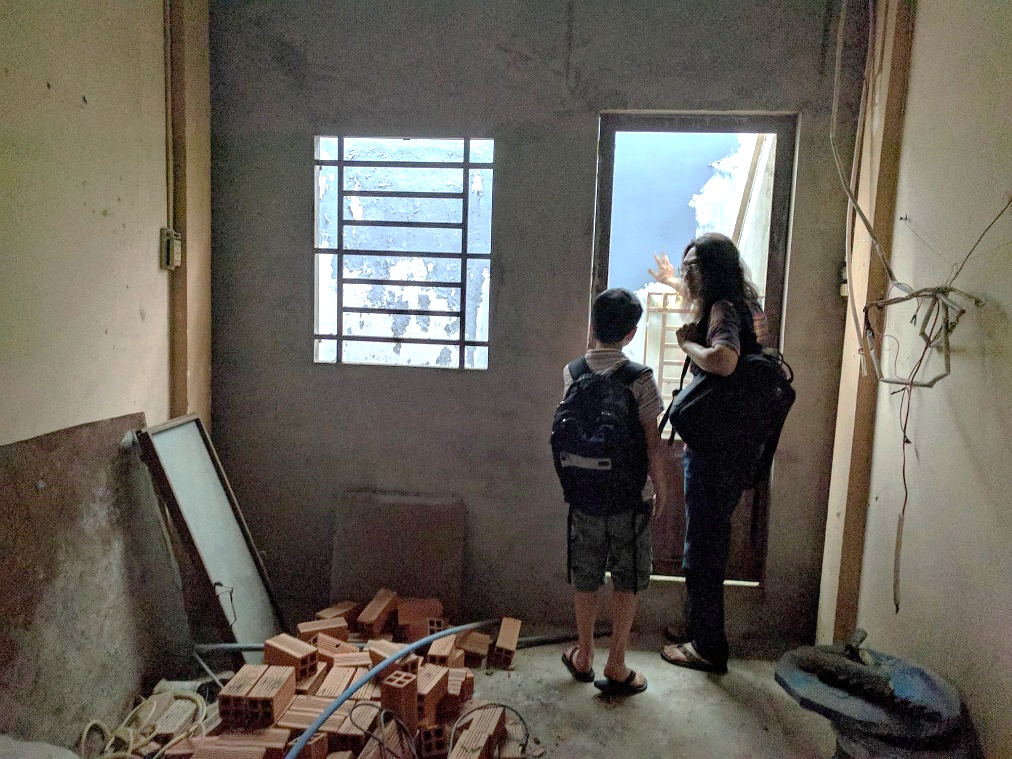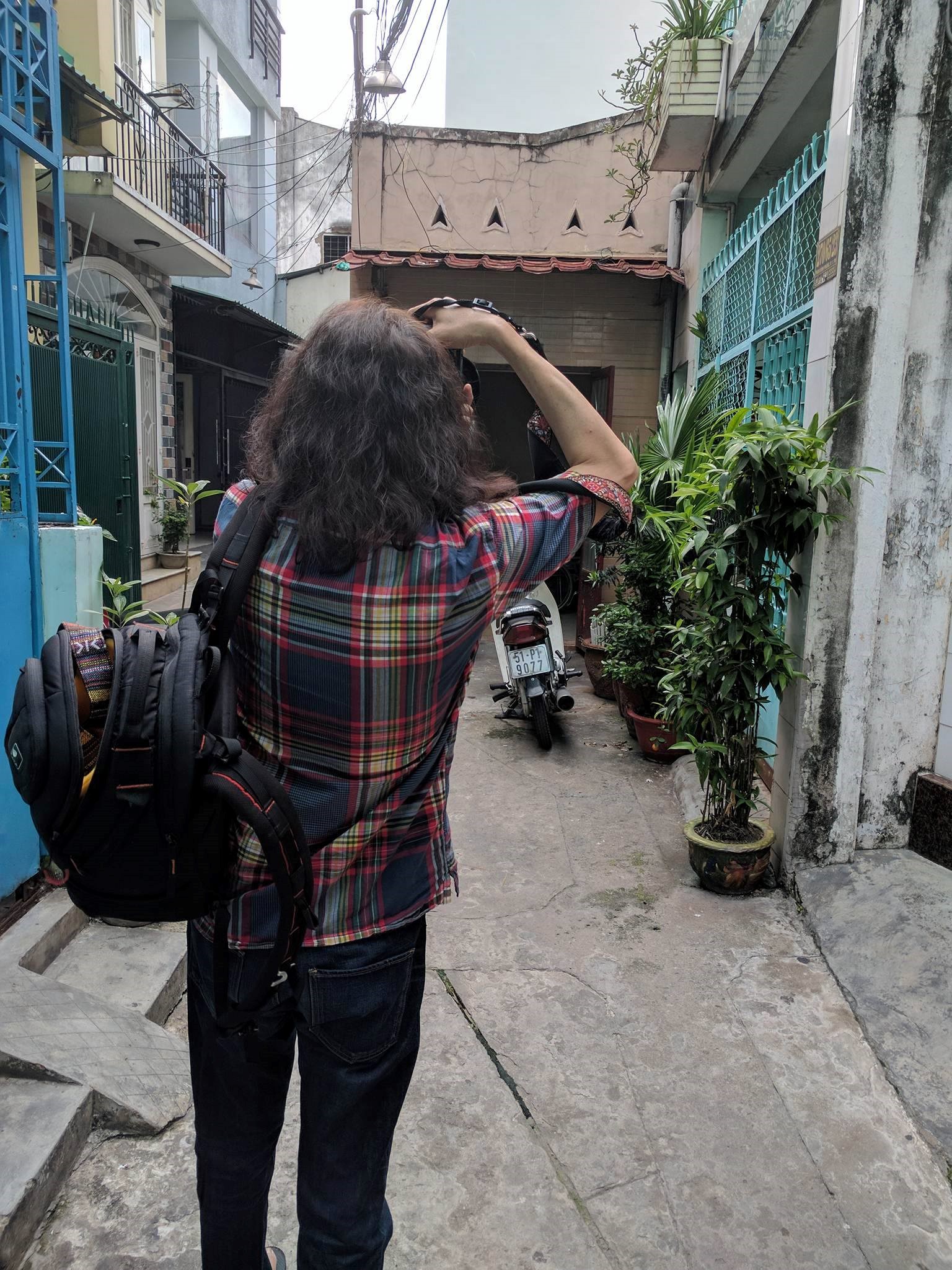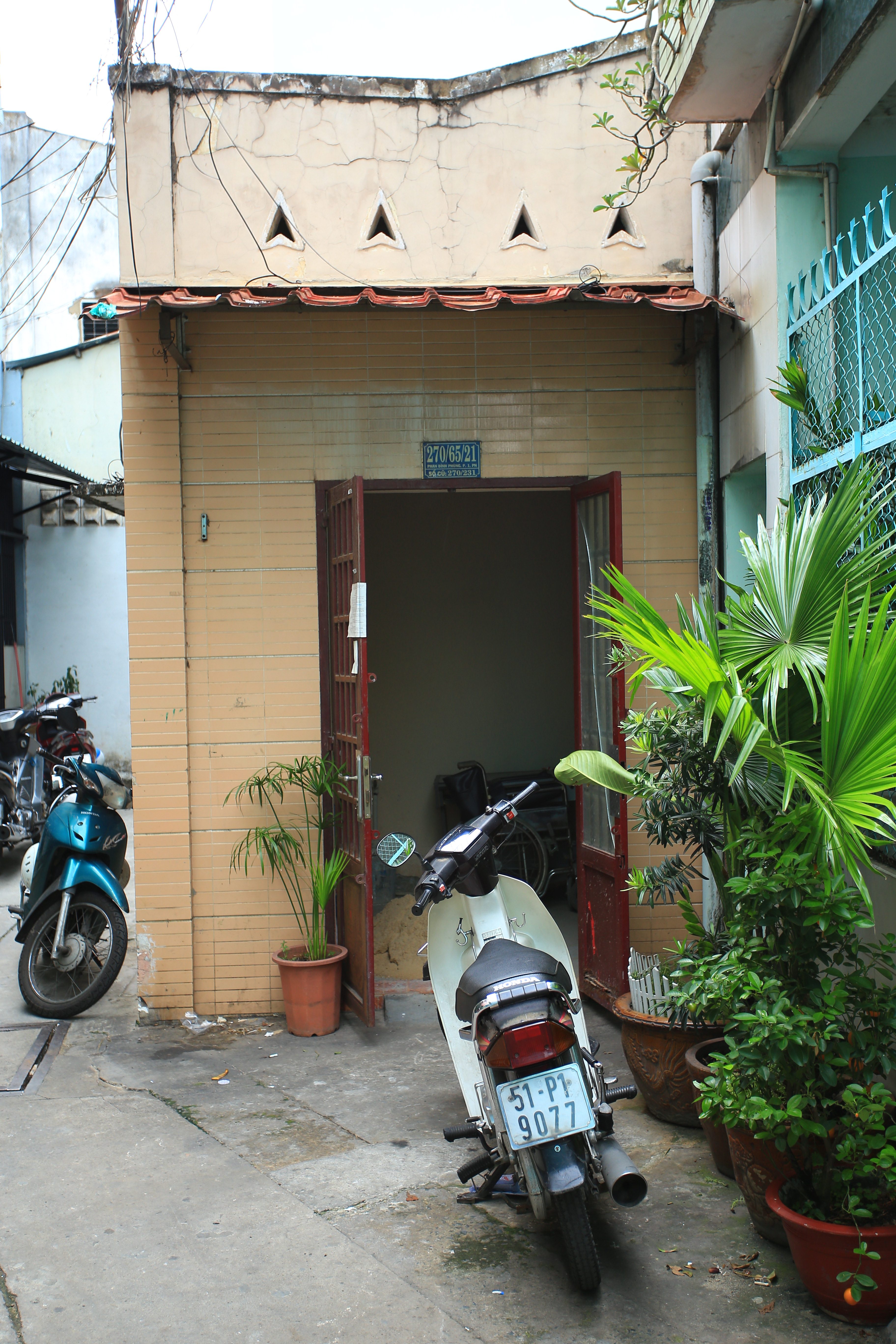by Danica Bui
In July 2017, my family and I returned to Vietnam, thirteen years after our last visit together. Once we were there, my father, Duong Bui, took us to his childhood home. This was the house in Saigon was where he lived since birth and had remained there until he became a refugee and fled Vietnam. His mother, siblings, and their families continued to live in the house after he left the country. I had been there previously, but the house behind it underwent a complete renovation, so I did not know what to expect. The house itself is not in use anymore, but at the time of his childhood, it contained everything he had. It holds great sentimental value to my family members who had lived there. The house has been a part of the family since my grandparents and aunts and uncles moved from Northern Vietnam to Saigon in the 1950’s to escape the communist regime that followed Vietnam’s establishment of independence from France.
Living in a “home” or a “house”?
Globalization and the conflict within and between nations can, and often does, drive people away from their places of origin. They leave to other places that they believe will provide them with better opportunities. Vietnam is a rapidly industrializing and urbanizing country, and it is currently undergoing a demographic shift. The way that people live, their buying power, and their social conditions of the Vietnamese people are changing in all sorts of ongoing ways. While the country has undergone an almost unrecognizable transformation since the 1970’s, artifacts remain to remind and connect us to a time before these social shifts.
Houses are not always considered to be homes, and this especially applies to my father, who has inhabited a succession of houses worldwide but has only retained sentimental value to one. When my father was growing up, he told stories about his refugee experience and his worldwide travels. He was born in 1955 and lived there until he escaped the communist regime in the late ‘70s. The nation of Vietnam at present is no longer the country in which he grew up in. The Communist Party of Vietnam is still in power. The name of the city has been changed from Saigon to Ho Chi Minh City, after the previous Prime Minister of Northern Vietnam. It was previously the capital city of Southern Vietnam, but Hanoi became the capital city of Vietnam when the south fell. To my father, home for him is where his kin live. Therefore, where we, his children, are. Home, in his interpretation of the idea, is not attached to a house or a country. Rather, home is the memories made in a specific space at a specific moment in time.
Ideas about “home” using photographs
My father’s hyper-mobility has resulted in us having and keeping few material objects in our home. The possessions we have are all relatively recently acquired. They do not carry a lot of sentimental value for me. The objects that we have in our home do not remind us of where my family is from, historically. The absence of physical objects might be why my father and I are interested in photography as a pastime. Growing up, we had many photographs that we used to look at and reminisce about. Due to our quasi-nomadic lifestyle, the photographs have been given to family members for safekeeping. Digital photos are more portable, and the photos that my father took over time he keeps backed up on a large flash drive.
Sociologist Liza McCoy (1995) explores the subjectivity of photographs and politicized function of photography. Her point that the way a photo is perceived depends on social and historical contexts that one is embedded in plays out in the three photographs of my father’s childhood house. Photographs are not necessarily understood as artifacts, but a moment in life captured on film cam tell a lot about the photographer. How we think and talk about photos can give is interesting insight about others (and us) as viewers, too.
I had not revisited these photos until I embarked on an assignment for Migration and Public Health, which was titled “Private and Public Artifacts Related to Migration.” In this paper, I delve into the significance of my father’s childhood home and the different ways we took photographs of the house. This paper had me searching my house for material objects that could be tied back t my family’s migration journey. I had thought long and hard about the object that I wanted to use as my artifact, because we do not have any material objects that are of sentimental value. As I was scrolling through my phone, I came across the photos that I took, and that was when I saw that my father was also taking photographs as well. From there, I decided to look around our home for the photo he had taken. When I found the photo, I decided that it would be interesting and analytically valuable to compare the photos I had taken with those that my father had taken.
Like the McCoy piece states, photos are subjective and the way we perceive photographs are shaped by the social norms ingrained within us (McCoy, 1995). Two of photos are ones that I took of my father and his old house, and the other photo is the photo that he took, while I was taking a photo of him. Both of the photos that I took were taken on my phone, while his was taken on his DLSR camera, hence the discrepancy in photo quality and colour.

Figure 1. Photograph of my father is showing my brother the house. There is not a lot to show, physically, but he reminisces about his ten family members that shared the house, his neighbours, and the area back in the 50s-70’s. My father is the focus of this photograph. My little brother Allan is included as well. It was Allan’s first time in Vietnam, and my first time back in thirteen years.

Figure 2. My father takes a photograph of his old house where he has not been back in over five years. Compared to the surrounding houses, it is tiny in comparison, but at one point, most of the houses in that area were similar in size. All the houses, including my fathers, have been rebuilt and expanded, but only his has remained the same size. The house is no longer in use, but the family continues to keep it. This was taken with my phone camera, without my father knowing. I wanted to capture the moment he saw his old house with his children during a genuine, candid moment. In contrast, he brought his backpack with all his camera gear and lenses to take pictures of the house. This was his first time back in over five years, and he took his time taking the photo. He adjusted the shutter speed, aperture, and exposure. He wanted to capture his house in what he thought was the best way possible.

Figure 3. My father took this photo of his house, at the same time as when I took the photo shown in Figure 2.
Photography is a useful way to develop insights about culture, social norms, and the perspective of the photographer and the viewer. The perspective of my father, the photographer, is important. It shows how he sees it, in the composition, lighting, and field of vision of his choosing. The first two photographs (Photos 1 & 2) are representative of my perspective of the house. My perception of the house is quite impersonal, so my father was always the primary subject of the photos. The house served as a secondary subject in the photographs that I took. I saw it as the house my father and his family lived in because they were poor; nothing more. In contrast, however, my father took great care in capturing the photograph, commemorating his home. I had, rather haphazardly whipped out my phone to snap a few quick photographs before the moment was over.
Through my father, I developed a deeper understanding of the importance of his childhood house. Speaking to my aunt and cousins that also used to live in the house gave me deeper insight into how hard my family has worked to retain and maintain the house, even from other family members. Although my father enjoys storytelling, he does not really reveal that much of his inner life. The subjectivity of my father’s photo (Photo 3) is important: it shows how he sees it, in the composition, lighting, and field of vision that he of his choosing. Photos are subjective and the way we perceive photographs are shaped by the social norms that surround us, as I came to learn through reflecting on McCoy’s (1995) ideas. Two of the photos are ones that I took of my father and his childhood house, and the other photo is the photo that he took, while I was taking a photo of him. One photograph is of my father is showing my brother the house (Photo 1). There is not a lot to show, physically, but he reminisces about his ten family members that shared the house, his neighbors, and the area back in the 50s-70’s.
I used my phone camera to take the photos. I wanted to be discreet and to take the photos without my father noticing. My intention was to capture the moment he saw his childhood house with his children during a genuine, candid moment. In contrast, he brought his backpack with all his camera gear and lenses to take pictures of the house. This was his first time back in over five years, and he took his time taking the photo. He adjusted the shutter speed, aperture, and exposure. He wanted to capture his house in what he thought was the best way possible.
Before and after 1975, experiencing a “double absence”
It is valuable to set my father’s story into a socio-political context. Two separate waves of emigration, multiple collective memories, the Việt Kiều, and the American Vietnamese media shape the Vietnamese diasporic perspective. The Vietnamese diaspora in North America is a layered society. Chinese and French colonialism, Western intervention, and war resulted in high mobility inside and outside of Vietnam. The “double absence” concept explored by Khosravi (2011) can be seen in the Vietnamese diaspora. They are simultaneously detached from or not accepted by the country that they live in and are absent from their country of origin. Like other communities dispersed globally, mass emigration was the result of conflict. The first large emigration movement followed the 1954 Geneva conference that separated North and South Vietnam into separate states. A wave of northern Vietnamese people emigrated to the south to escape the communist regime. My father’s family was among those that left the north. My grandmother was pregnant with him, and he was born in Saigon, and lived in his childhood home since birth. In 1975, when the Vietnamese communist party won the war, massive structural changes throughout the country.
The capital city of southern Vietnam is Saigon. It had fallen under communist rule. The diasporic group that the war produced is, generally speaking, strongly anti-communist. People have a strong nationalist orientation to a place that, actually, no longer exists politically (Vietnamese Diaspora – Part 1 – Oct 2000, 2008). “Home” as these people know it, therefore, no longer exists as long as the communist regime stays in place. Many of my family and family friend’s stories begin with “before ‘1975” or “after ’1975.” The refugees of the Vietnam War hold onto sentiments of a past version of Vietnam that no longer exists. Their practices of Vietnamese culture remain the same even after they leave Vietnam. Their Vietnamese language, beliefs, and values are held even once they integrate into their host country’s society. This can lead to disconnection between both cultures for the diaspora, or a “double absence” (Khosravi, 2011). They are detached from or not accepted by the country that they live in and are absent from their home country.
Losing one’s home is a common phenomenon within diaspora groups and is especially apparent in Vietnamese diaspora groups. Mass migration following the Vietnam War disrupted families and the population of the country as a whole. Having to physically leave one’s country of origin, and having the country transform under a new regime renders their previous home completely obsolete.
Yet, my father’s childhood house continues to retain sentimentality and is a physical representation of his upbringing. It connects him to his family, his childhood, and his home country that no longer exists in the same way it did before. The photographs that my father and I took of his house highlights the alternative ways in which we view the artifact, and the way we view our country of origin. Although we both come from the same country and have similar hobbies, our historical life journeys differ greatly. Like his childhood home, still standing strong after many years, his story continues to inspire the younger generation of our family.
References
Khosravi, S. (2011). ‘Illegal’ Traveller. Basingstoke, Hampshire: Palgrave Macmillan.
McCoy, L. (1995). Activating the Photographic Text. In M. Campbell & A. Manicom (Eds.), Knowledge, Experience and Ruling Relations (pp. 181-192). Toronto, ON: University of Toronto Press.
Vietnamese Diaspora – Part 1 – Oct 2000. (2008). [Video]. California.
